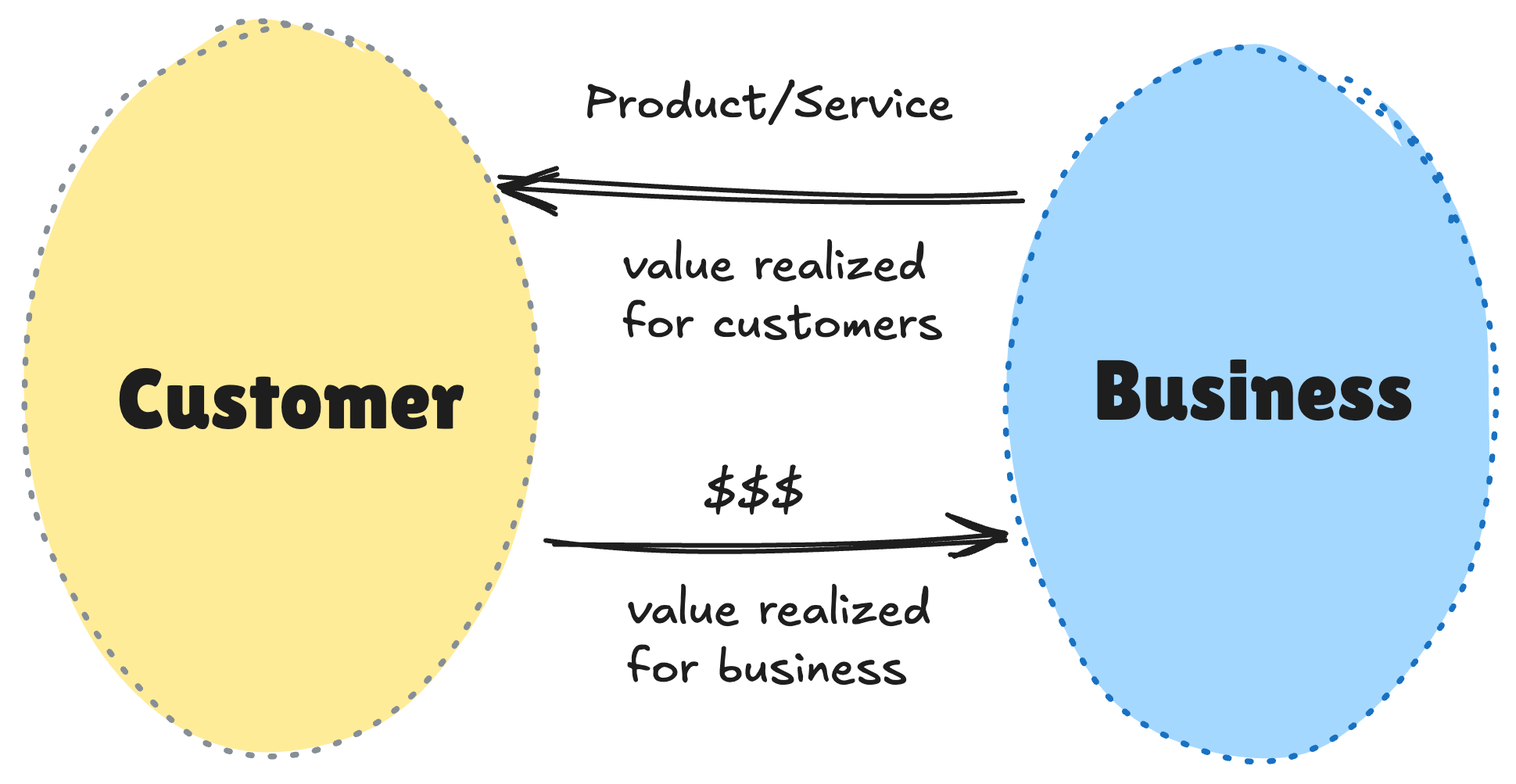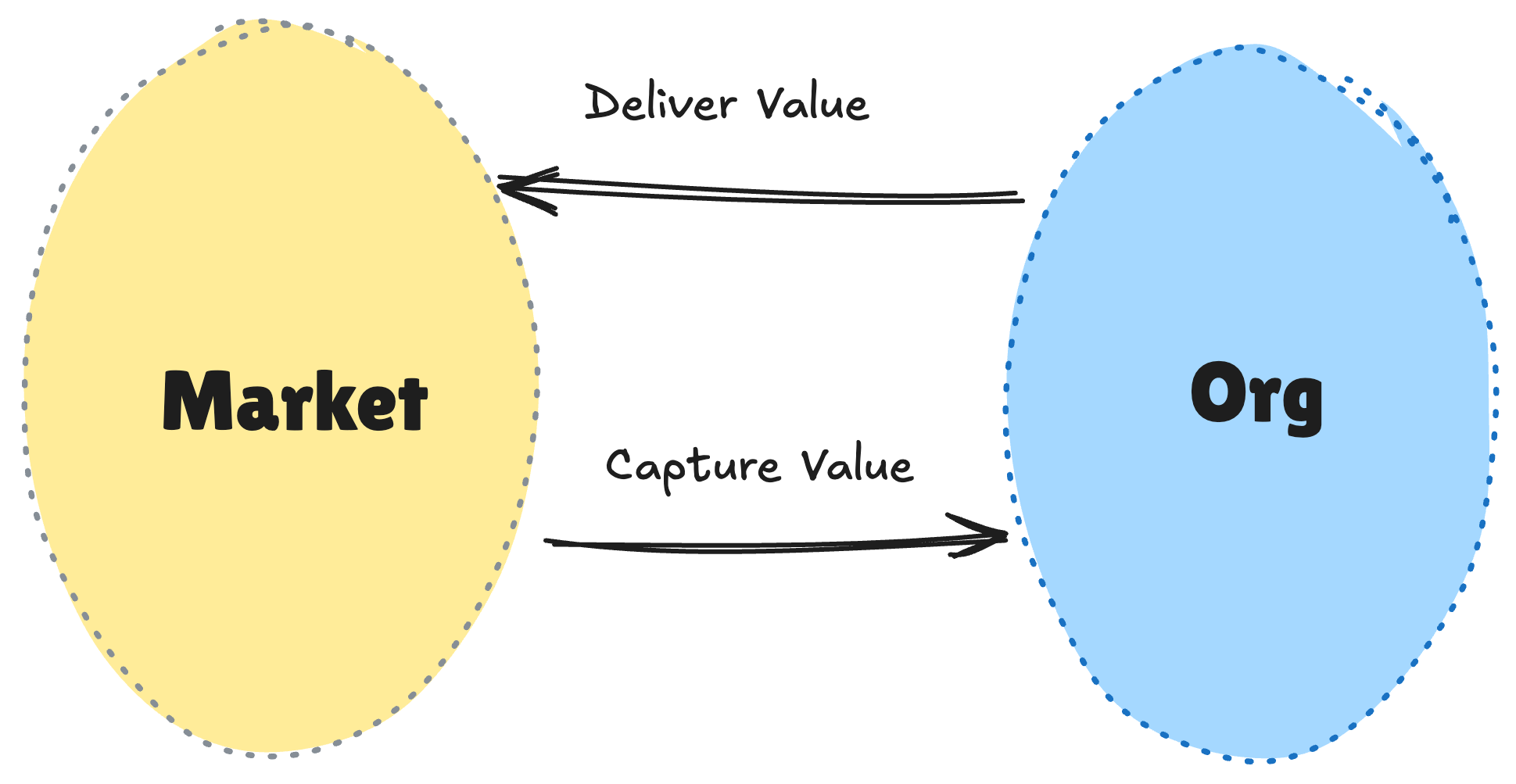Value Exchange Loop
The Value Exchange Loop (or Value Exchange System) is a mental model clarifying how the two main types of product value co-evolve. Melissa Perri defined the model in the book Escaping The Build Trap, as a way to stimulate product management and delivery teams to gain closer understanding of users and customers.
On one side, customers and users have problems, wants and needs. On the other side are the businesses that create products or services to resolve those problems, and fulfil those wants and needs. The customer realizes value only when these problems are resolved and these wants and needs are fulfilled. Then, and only then, do they provide value back to the business.
– Melissa Perri

In Evidence Guided, Itamar Gilad rephrased the directions as “value captured” and “value delivered” looking at the loop from the perspective of the organization delivering the product.

Gilad suggested making the value exchange loop measurable to ensure that it is working, and tracking two types of value:
- The North Star Metric to measure how much value the product delivers
- The Top Business Metric to measure how much value the product captures
Having two top-level metrics “reflects the dual mission” of the value exchange loop, according to Gilad.
Applicability and limitations of the model
The Value Exchange loop is very simple, so it works nicely to motivate people to think about the customer and business value and move away from both the stakeholder-centric worldview, where only the business value matters, and an customer service desk model, where the team focuses too much on what customers ask for and lose sight of the big picture.
This model is focused on win-win scenarios, that are good both for the customers and for the business. It might be too simplistic for situations with several levels of customers and actors (where the business might need to help the customer’s customers do something). It may not fit nicely with situations where the business and the customers have conflicting incentives (for example, when an established business wants to capture more value from existing customers by restricting the service in cheaper tiers).
Learn more about the Value Exchange Loop
- Escaping The Build Trap: How Effective Product Management Creates Real Value, ISBN 978-1491973790, by Melissa Perri
- Evidence-Guided: Creating High Impact Products in the Face of Uncertainty, ISBN 978-8409536399, by Itamar Gilad
- The Value Exchange System by Melissa Perri
- How to optimize your value exchange system by Gabe Weaver (2019)